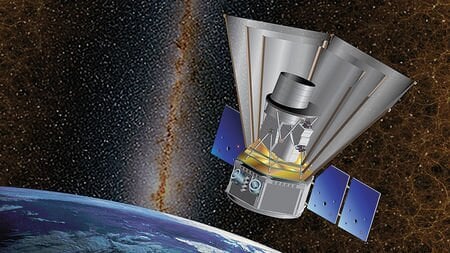NASA's SPHEREx Observatory and Its Significant Mission


Introduction to NASA's SPHEREx Observatory
NASA has consistently been at the forefront of astronomical exploration and innovation. One of its latest initiatives, the SPHEREx (Spectrographic Planet Observatory for Recognition of Extrasolar Habitable Worlds) mission, is designed to gather unprecedented data about our universe. This remarkable observatory aims to collect vital information on a staggering 450 million galaxies, as well as 100 million stars located within our own Milky Way galaxy.
The Objectives of the SPHEREx Mission
The primary objective of the SPHEREx mission is to map the universe's structures and understand the processes that have shaped the cosmos. By surveying these 450 million galaxies, the observatory will observe different phases of galaxy formation and evolution, allowing scientists to create a more comprehensive picture of the universe's history. Furthermore, SPHEREx is equipped to analyze the Milky Way's 100 million stars, focusing on their chemical compositions and individual characteristics, which is crucial for understanding our galaxy's formation.
Advancements in Techniques and Technologies
SPHEREx utilizes advanced infrared technology that enables it to capture data beyond the capability of traditional optical telescopes. This innovative approach allows the observatory to peer through cosmic dust clouds, revealing stars and galaxies that were previously obscured from view. The observatory will conduct a full-sky survey, producing detailed maps that will provide insights into the universe's evolutionary timeline.
The data collected by SPHEREx will significantly enhance our understanding of cosmic phenomena, such as the formation of stars, the distribution of galaxies, and the potential for habitable planets in distant star systems. By accumulating vast amounts of information about a diverse range of celestial objects, SPHEREx will pave the way for future discoveries and theories in astrophysics.
Moreover, the mission's data will be made publicly available to the scientific community, promoting collaboration and innovative research across various fields of study. This commitment to open data will allow researchers around the world to explore the knowledge encapsulated within the 450 million galaxies and 100 million stars, inspiring future generations of astronomers and scientists.
Conclusion: The Future of Space Exploration
The SPHEREx observatory represents a significant leap forward in our quest to understand the universe. By collecting vast datasets on 450 million galaxies and 100 million stars, it will provide a wealth of information that could answer some of the most fundamental questions about our existence and the nature of the cosmos.
As we continue to explore and expand our understanding of the universe, missions like SPHEREx will play a crucial role in shaping the future of space exploration. Through comprehensive data collection and analysis, we may unlock the secrets of the universe and gain further insights into the fundamental forces that govern our cosmos.
